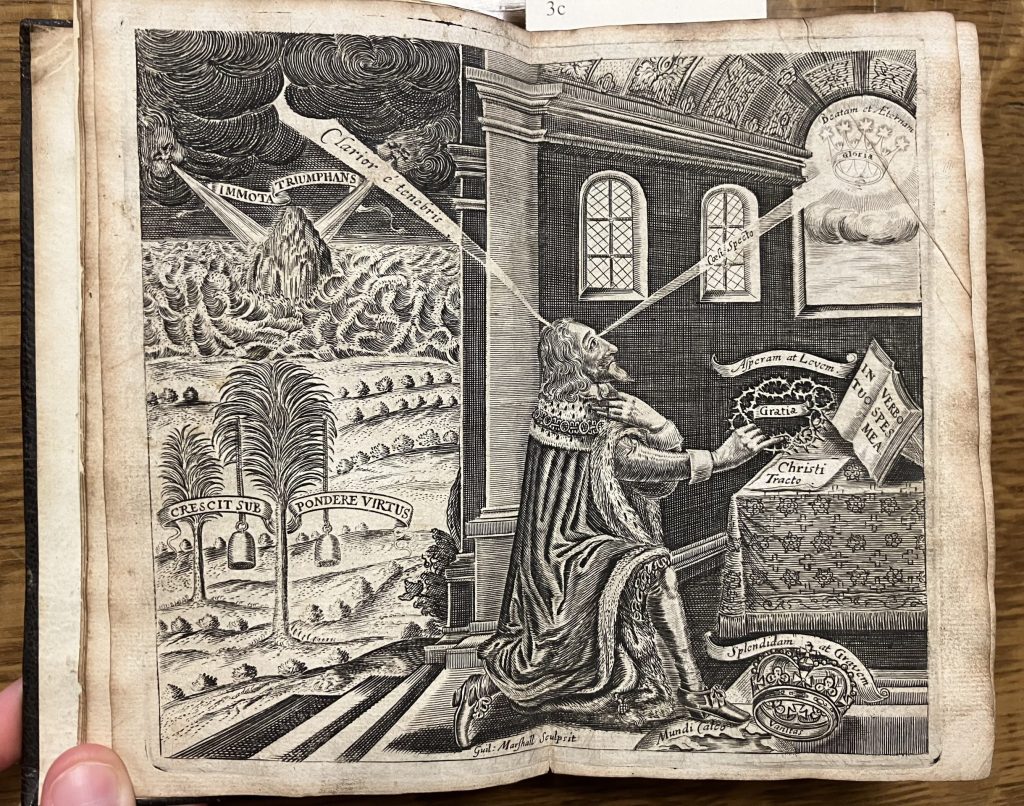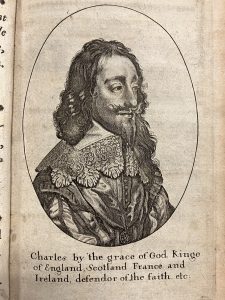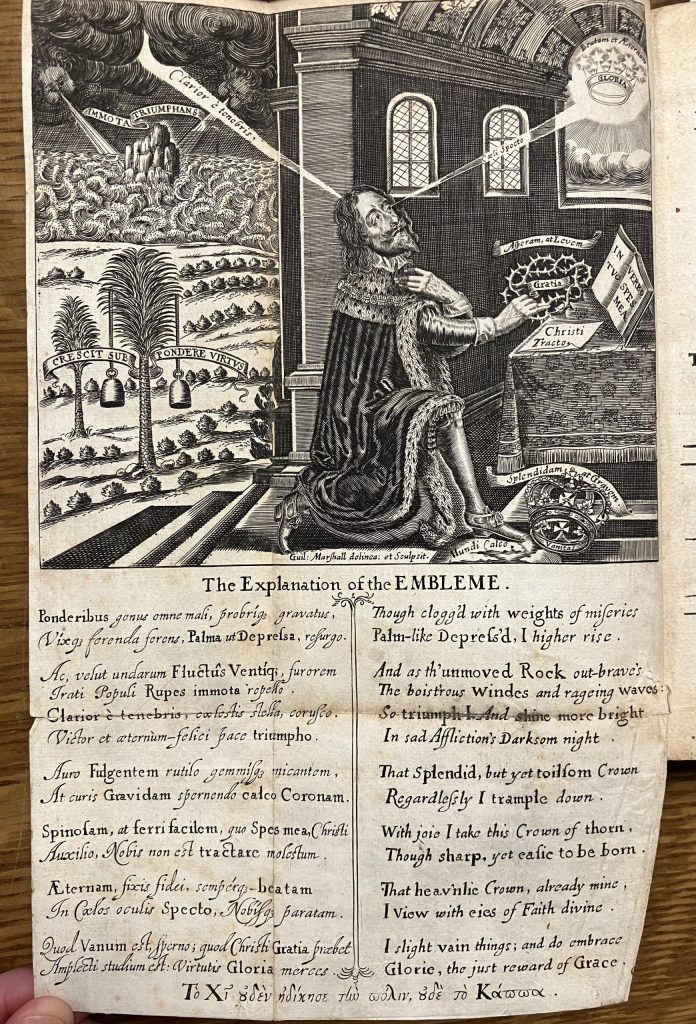By Elissa B.G. Mullins
56 copies in 26 editions of the Eikōn basilikē of King Charles I have recently been disambiguated, rescued from minimal catalogue records, and made fully accessible to researchers.

Although its publication could not save Charles I from his beheading in 1649, the Eikōn basilikē (subtitled The pourtraicture of His sacred Majestie in his solitudes and sufferings) exerted tremendous influence over the British public and has been credited with the later restoration of the monarchy. According to the History of Great Britain (volume vii, page 154—quoted in manuscript on the front paste-down of 942.06 Ei425 copy 3),
“It is not easy to conceive the general compassion excited towards the King, by the publishing, at so critical a juncture, a work so full of piety, meekness, and humanity. Many have not scrupled to ascribe to that Book the subsequent restoration of the Royal Family … The Icon Basilike passed through fifty editions in a twelvemonth; and it must be acknowledged the best prose composition, which, at the time of its publication, was to be found in the English language.”


Authorship of the Eikōn basilikē remains uncertain; it was originally attributed to Charles I, but according to F.F. Madan (whose provides the basis for the numbering of our editions), it was probably written by John Gauden (1605-1662), who may have included some authentic writings of the King. In addition to numerous English editions, within a year it had been translated into French, German, and Latin, the latter by John Earle (1601?-1665) at the behest of Charles II.
Nearly all editions feature a version of an allegorical frontispiece engraved by William Marshall (active 1617-1650) depicting King Charles I as a Christian martyr. Later editions include additional portraits, one of Charles at age 19, and another subtitled “Charles by the grace of God, Kinge of England, Scotland, France and Ireland, defendor of the faith, etc.”
Notable copies in our collection include a presentation copy from Charles I to one of his royalist supporters or “cavaliers” (942.06 Ei43c, 3rd issue of 3rd edition): one of the few editions published before his execution, it is bound in dark brown morocco with the royal coat of arms and cyphers “CR ES” in gilt. Another copy belonged to Charles II (942.06 Ei425 copy 6, 25th edition), and features a scrap of vellum attached to the front paste-down with the signature “W. Cant”—that is, William Juxon, Archbishop of Canterbury, who attended Charles I at his execution and received his “Private prayers used in the time of his restraint”, which are included in this and many other editions of the Eikōn basilikē.
